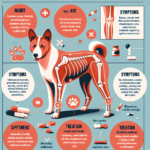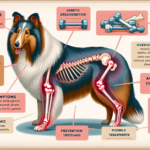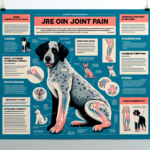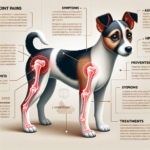Pyrenean Mastiff Joint Pain: Causes, Symptoms, Prevention, and Treatment
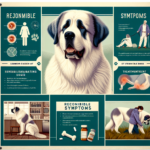
Introduction
The Pyrenean Mastiff is a majestic and powerful breed known for its gentle demeanor and protective instincts. Originating from the Pyrenees Mountains in Spain, this breed was historically used as a livestock guardian, protecting flocks from predators such as wolves and bears. With a robust build, thick double coat, and a calm yet vigilant nature, the Pyrenean Mastiff is both a formidable guardian and a loving family companion.
Like many large breeds, the Pyrenean Mastiff is prone to certain health issues, with joint pain being a significant concern. Joint health is crucial for this breed due to their size and the physical demands placed on their bodies. Understanding the causes, symptoms, prevention, and treatment of joint pain in Pyrenean Mastiffs is essential for ensuring their well-being and longevity.
Breed-Specific Joint Pain Risks
Genetic Predisposition
The Pyrenean Mastiff, like many large breeds, is genetically predisposed to joint-related issues. Common conditions include hip dysplasia, elbow dysplasia, and arthritis. Hip dysplasia occurs when the hip joint does not fit together perfectly, leading to wear and tear. Elbow dysplasia involves abnormal development of the elbow joint, causing pain and lameness. Arthritis, a degenerative joint disease, can develop as a result of these conditions or independently as the dog ages.
Age-Related Risks
As Pyrenean Mastiffs age, the risk of joint pain increases. While young dogs may show early signs of joint issues, such as hip or elbow dysplasia, older dogs are more likely to develop arthritis. Owners should be vigilant about joint health as their Pyrenean Mastiff reaches middle age, typically around 5-7 years old, and continue monitoring into their senior years.
Activity Level and Joint Stress
The Pyrenean Mastiff’s role as a working dog means they are often engaged in activities that can stress their joints. Whether guarding livestock or participating in family activities, their large size and weight can exacerbate joint issues. High-impact activities, such as jumping or running on hard surfaces, can contribute to joint stress and should be moderated to protect their joints.
Common Symptoms of Joint Pain in Pyrenean Mastiffs
General Symptoms
- Limping: One of the most noticeable signs of joint pain is limping or favoring one leg.
- Stiffness: Stiffness, especially after rest or in the morning, can indicate joint pain.
- Reluctance to Move: A dog in pain may be reluctant to climb stairs, jump, or even go for walks.
- Swelling: Swelling around the joints can be a sign of inflammation.
- Behavioral Changes: Irritability, lethargy, or changes in appetite can also be indicators of discomfort.
Breed-Specific Symptoms
In Pyrenean Mastiffs, symptoms such as difficulty rising from a lying position or a noticeable decrease in activity levels may be more pronounced due to their size. Owners should also watch for signs of pain when the dog is performing tasks they previously enjoyed, such as guarding or playing.
When to Consult a Vet
If any of the above symptoms are observed, it is crucial to consult a veterinarian. Early intervention can prevent further deterioration and improve the dog’s quality of life. Regular veterinary check-ups are also essential for monitoring joint health and catching issues early.
Preventive Measures for Joint Health
Exercise Recommendations
Regular, low-impact exercise is vital for maintaining joint health in Pyrenean Mastiffs. Activities such as walking, swimming, and controlled play can help keep joints flexible and muscles strong without causing undue stress. Avoid high-impact activities like jumping or running on hard surfaces, which can exacerbate joint issues.
Dietary Suggestions
A balanced diet rich in nutrients that support joint health is essential. Foods containing glucosamine, chondroitin, and omega-3 fatty acids can help maintain joint function and reduce inflammation. Supplements specifically designed for joint health can also be beneficial, but it is important to consult a veterinarian before adding any new supplements to your dog’s diet.
Weight Management
Maintaining a healthy weight is crucial for reducing joint stress. Excess weight can exacerbate joint issues and lead to more severe pain and mobility problems. Owners should work with their veterinarian to determine the ideal weight for their Pyrenean Mastiff and develop a diet and exercise plan to achieve and maintain it.
Early Screening and Monitoring
Early screening for joint issues can help catch problems before they become severe. Regular veterinary check-ups, including X-rays and physical exams, can identify early signs of hip or elbow dysplasia and other joint conditions. Monitoring your dog’s movement and behavior can also help catch issues early.
Treatment Options for Joint Pain
Non-Surgical Treatments
Non-surgical treatments for joint pain include medications, physical therapy, and lifestyle adjustments. Anti-inflammatory medications and pain relievers can help manage pain and reduce inflammation. Physical therapy, including exercises and massage, can improve joint function and reduce pain. Lifestyle adjustments, such as providing a comfortable bed and avoiding high-impact activities, can also help manage joint pain.
Surgical Options
In severe cases, surgical intervention may be necessary. Common surgeries for joint issues in Pyrenean Mastiffs include hip replacement, elbow surgery, and arthroscopy. These procedures can significantly improve the dog’s quality of life, but they come with risks and require a thorough discussion with a veterinarian.
Alternative Therapies
Alternative treatments such as acupuncture, hydrotherapy, and massage can also benefit Pyrenean Mastiffs with joint pain. Acupuncture can help reduce pain and inflammation, while hydrotherapy provides low-impact exercise that can improve joint function. Massage can help relax muscles and improve circulation, reducing pain and stiffness.
Lifestyle and Management Tips
Daily Care Routine
A daily care routine for a Pyrenean Mastiff with joint pain should include gentle exercise, a balanced diet, and regular monitoring of their condition. Short, frequent walks and low-impact activities like swimming can help keep joints flexible. Providing a comfortable bed and avoiding high-impact activities can also help manage pain.
Modifying the Home Environment
Making the home environment more comfortable for a dog with joint pain can significantly improve their quality of life. Consider adding ramps to help them navigate stairs, providing orthopedic beds for better support, and ensuring their living area is free of obstacles that could cause injury.
Long-Term Management
Long-term management of joint pain involves regular veterinary check-ups, ongoing monitoring of the dog’s condition, and making necessary adjustments to their care routine. Maintaining a healthy weight, providing appropriate exercise, and using medications or supplements as needed can help keep the dog active and happy despite joint pain.
FAQs About Pyrenean Mastiffs and Joint Pain
What are the early signs of joint pain in Pyrenean Mastiffs?
Early signs of joint pain include limping, stiffness, reluctance to move, and behavioral changes such as irritability or lethargy. If you notice any of these symptoms, consult your veterinarian for a thorough examination.
Can joint pain in Pyrenean Mastiffs be prevented?
While genetic predisposition cannot be changed, preventive measures such as maintaining a healthy weight, providing appropriate exercise, and using joint supplements can help reduce the risk of joint pain. Early screening and regular veterinary check-ups are also essential for catching issues early.
What are the best exercises for a Pyrenean Mastiff with joint pain?
Low-impact exercises such as walking, swimming, and controlled play are best for Pyrenean Mastiffs with joint pain. These activities help keep joints flexible and muscles strong without causing undue stress.
Are there any specific dietary recommendations for Pyrenean Mastiffs with joint pain?
A balanced diet rich in nutrients that support joint health is essential. Foods containing glucosamine, chondroitin, and omega-3 fatty acids can help maintain joint function and reduce inflammation. Consult your veterinarian for specific dietary recommendations and supplements.
When should I consider surgery for my Pyrenean Mastiff’s joint pain?
Surgery should be considered when non-surgical treatments are no longer effective, and the dog’s quality of life is significantly impacted. Common surgeries for joint issues include hip replacement, elbow surgery, and arthroscopy. Discuss the risks and benefits with your veterinarian to determine the best course of action.
Conclusion
Joint pain is a significant concern for Pyrenean Mastiffs due to their size and genetic predisposition. Understanding the causes, symptoms, prevention, and treatment options is essential for ensuring their well-being and longevity. By taking preventive measures, providing appropriate care, and consulting with a veterinarian regularly, owners can help their Pyrenean Mastiffs live happy, active lives despite joint pain.

